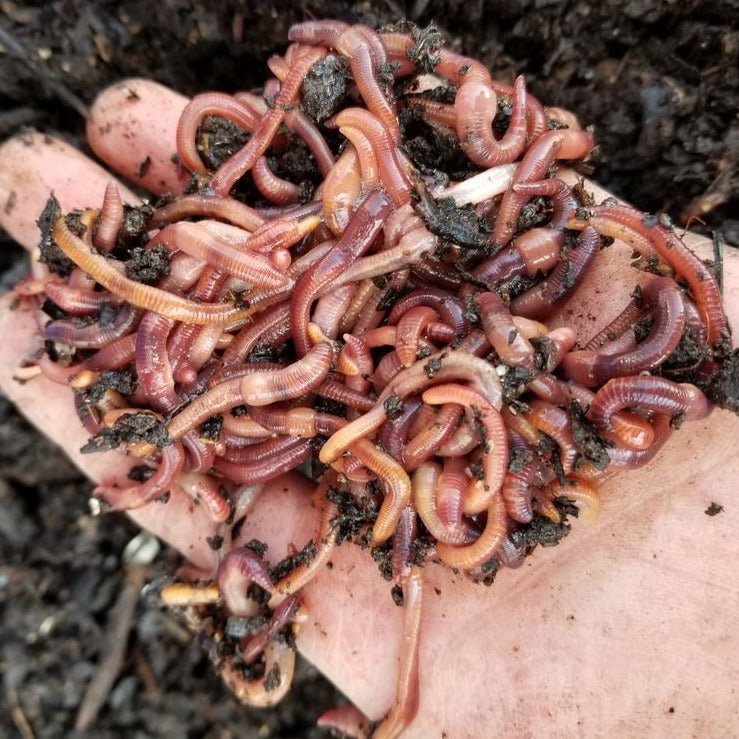Red Wiggler Composting: How to Start and Keep an Effective Worm Container
Red Wiggler Composting: How to Start and Keep an Effective Worm Container
Blog Article
Comprehending the Advantages of Red Wiggler Composting: Exactly How This Efficient Technique Transforms Organic Waste Into Nutrient-Rich Dirt Amendments
Red Wiggler composting, utilizing the species Eisenia fetida, offers a compelling strategy to organic waste monitoring, converting cooking area scraps and yard debris right into beneficial dirt modifications. This method not only improves dirt fertility yet additionally addresses pressing environmental issues, including landfill waste reduction and greenhouse gas discharges. As we check out the details of this procedure, the multifaceted benefits it provides might expose unanticipated understandings right into lasting techniques and eco-friendly equilibrium. Recognizing these measurements might motivate a reevaluation of just how we perceive waste and its prospective payments to a healthier planet.
What Are Red Wigglers?
Red wigglers, scientifically called Eisenia fetida, are a species of earthworm that play a pivotal duty in vermicomposting systems. These worms are defined by their reddish-brown color, segmented bodies, and a distinctive capability to flourish in organic-rich environments, making them perfect for composting applications - Red Wiggler Composting. Unlike their garden-dwelling counterparts, red wigglers favor to live in the top layers of dirt, where rotting issue is plentiful
Commonly determining between 3 to 4 inches in size, red wigglers have a high reproductive rate, enabling them to multiply quickly under optimal conditions. They possess a distinct digestive system that permits them to refine organic waste efficiently, converting it right into nutrient-rich castings, which are extremely valuable for plant development.
Their tolerance to differing moisture levels and temperature level ranges further improves their utility in vermicomposting setups, making them a preferred choice among composting fanatics. Additionally, red wigglers are aerobic microorganisms, which requires a well-aerated composting setting, guaranteeing reliable decomposition. Comprehending the organic characteristics and actions of red wigglers is necessary for enhancing their usage in sustainable waste administration methods.

Benefits of Vermicomposting
Using the power of vermicomposting offers a plethora of environmental and farming advantages. It dramatically minimizes natural waste in land fills, thereby minimizing methane discharges, a powerful greenhouse gas. By drawing away food scraps and yard waste to vermicomposting, we sustain an even more lasting waste management system.
Furthermore, vermicomposting improves soil health. The castings created by red wigglers are rich in necessary nutrients, germs, and enzymes, boosting dirt structure and fertility. This nutrient-rich amendment promotes robust plant growth and increases water retention, reducing the need for chemical fertilizers.
Additionally, vermicomposting fosters biodiversity in the dirt community. The introduction of beneficial microorganisms from worm castings help in illness reductions and nutrient cycling, producing a healthier atmosphere for plants.
Economically, vermicomposting reduces the prices related to chemical inputs and waste disposal. Farmers and gardeners can grow high-grade fruit and vegetables at reduced expenditures, adding to food safety and security and sustainability.
How to Start Composting
Beginning a composting endeavor can be a gratifying and straightforward procedure. This will aid maintain a well balanced temperature, critical for the composting procedure.
Collect organic materials such as cooking area scraps, lawn waste, and shredded paper. Aim for a balanced mix of 'environment-friendly' materials, high in nitrogen (e.g., fruit scraps, coffee premises), and 'brown' materials, abundant in carbon (e.g., dried fallen leaves, cardboard) A proportion of roughly 2:1 green to brownish products is optimal.
Beginning layering your materials, ensuring appropriate air circulation by transforming the pile consistently. This promotes cardio decomposition, minimizing odors and speeding up up the process. Screen dampness degrees; the compost should seem like a wet sponge however not extremely damp.
Nutrient Account of Vermicompost
Composting, particularly with red wigglers, yields a nutrient-rich product recognized as vermicompost. In addition, it provides trace elements like magnesium, calcium, and iron, promoting robust plant development and enhancing soil health.
The microbial task existing in vermicompost better improves its account, presenting helpful bacteria and fungi that advertise vitamins and mineral schedule and uptake in plants. This biological component help in subduing plant diseases and improving dirt framework, causing improved water retention and aeration.

Ecological Impact of Composting
The ecological impact of composting, specifically like this through using red wigglers, is profound and complex. This method substantially reduces the quantity of natural waste sent to land fills, which in turn minimizes greenhouse gas emissions, especially methane-- a powerful contributor to climate modification. By drawing away organic materials from garbage dumps, red wiggler composting not just helps alleviate ecological degradation however additionally promotes sustainable waste administration techniques.

Furthermore, composting contributes to carbon sequestration, as the process catches carbon dioxide from the environment and shops it in the dirt. This all-natural procedure help in combating environment adjustment while improving the dirt - Red Wiggler Composting. On the whole, red wiggler composting offers a sensible, eco-friendly service for waste management and environmental sustainability, promoting healthier ecosystems and an extra lasting future
Verdict
In verdict, Red Wiggler composting acts as an efficient technique for converting organic waste into valuable dirt modifications. The process not just boosts dirt fertility and structure however likewise reduces ecological concerns connected with waste disposal. By using Eisenia fetida, this type of vermicomposting adds to improved biodiversity and supports lasting farming methods. Ultimately, Red Wiggler composting plays an essential function in promoting much healthier ecological communities and dealing with the challenges of environment modification.
Red Wiggler composting, employing the types Eisenia fetida, presents an engaging method to organic waste administration, converting cooking area scraps and lawn particles into useful soil changes. Unlike their garden-dwelling counterparts, red wigglers favor to i thought about this occupy the top layers of soil, where rotting matter is bountiful.
The castings generated by red wigglers are rich in crucial nutrients, microorganisms, and enzymes, improving dirt framework and fertility. The nutrient-rich by-products of red wiggler task improve dirt framework, increase water retention, and promote biodiversity within the dirt ecosystem.In final thought, Red Wiggler composting offers as an effective method for transforming natural waste into important dirt modifications.
Report this page